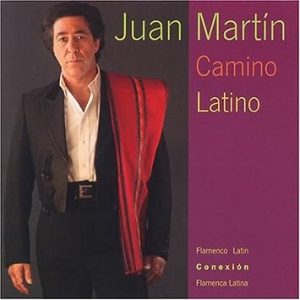Published on Apr 12, 2005
Although flamenco is not necessarily a popular genre in the
U.S., it is one that must be acknowledged by musicians, artists and
listeners as worthy of recognition. Latin flamenco guitarist Juan
Martin has earned abundant accolades, including being voted as one
of the top three flamenco guitarists in the world by US magazine
Guitar Player.
Martin is also the first flamenco artist to record with the
Royal Philharmonic Orchestra. He has performed at major
international arts festivals, and been broadcasted on BBC and CNN.
He has performed in the Royal Albert Hall. He has even formed an
international company in London, England in an effort to promote
both his own distinctive musical talents and the public’s
appreciation for high-quality flamenco music. And why not? Juan
Martin’s talents are evident on CAMINO LATINO.
Flamenco music is full of the history of Spain, specifically for
the province of Andalusia (Martin’s home territory). It has
traditionally been the music of the poverty-stricken and
down-trodden. The music tells a story of the people, and brings joy
at the same time. Martin explores the flamenco tradition of his
country through the guitar,, and has gathered a very talented group
of musicians and vocalists to help him.
He opens with “Vuelo,” a vivacious tune that immediately strikes
sparks with the listener. Bongos are played by Roberto Pla, who
contributes a vitality to the song. Fingersnaps (a musical artform
in themselves) add to the rhythm, courtesy of Raquel de Luna. On
“Bossa Rumba,” vocals are performed by Flora Purim. She is puissant
and oozes sensuality. This sexy song pulses with energy and
although I don’t speak Spanish, it was not difficult to understand
the sensual nature of the tune. “Maria Angeles” is a softer tune
but has a punch that can’t be ignored. This rumba piece is a great
backdrop to provocative dance. For those talented enough to pull it
off, oh baby.
The musical genre of bossa nova was created by blending the
Brazilian samba rhythm with cool jazz. Bossa nova means “new beat.”
Although light and airy, the bossa nova track “Pasion Triste” is no
less enthusiastic than its predecessors. Again, Flora Purim
performs and her vocals fall into the “passion” theme. “Amante”
closes out the album. Flute is played by Nicky Woodward, Chris
Karan takes the darbuka, and Steve Dummer proudly performs on the
clarinet. This gentle song starts like a lullaby, the flute
contriving a picture of cool grass, and builds into a spirited
conclusion warm like the sun.
I appreciate the history entwined in flamenco music. Juan
Martin, backed at times by Armando Escobar, provides an experience
on flamenco guitar that is unlike most that you will receive from
music. (For more information, visit
www.flamencovision.com.)
